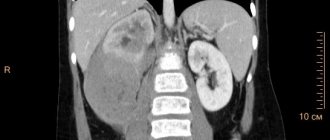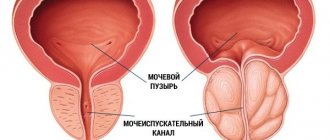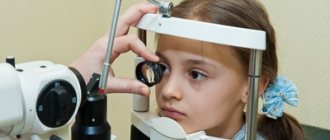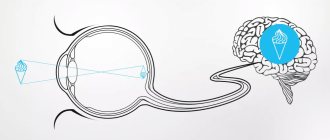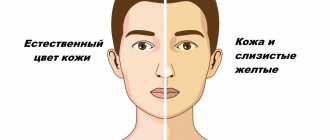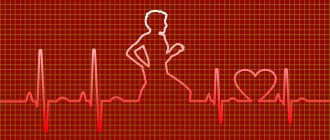We present the next article in our series of publications devoted to various forms of IHD (coronary heart disease). Today we will talk about arrhythmias.
Heart rhythm and conduction disorders are a large group of transient or permanent disorders, mainly arising from organic lesions of the cardiovascular system. They are caused by violations of the most important functions of the myocardium: automaticity, excitability and conductivity.
Cardiac arrhythmias is a collective concept for a number of different disturbances in the frequency, rhythm and sequence of heart contractions. Diagnosis of coronary heart disease is carried out using an ECG.
The resting heart rate of most healthy people is 60–75 beats per minute.
Causes of pathology
Fibrillation and ventricular flutter occur due to the pathology of impulse transmission through the myocardium.
These rhythm disturbances are successive stages of the development of one process. In ICD-10 (International Classification of Diseases, 10th revision) they are classified under one heading. Dysfunction of the cardiac pathways can occur as a result of:
- large scar (consequence of myocardial infarction);
- focal post-infarction cardiosclerosis;
- coronary heart disease;
- acute myocardial infarction;
- cardiomyopathy with severe hypertrophy of cardiomyocytes;
- dilatation (stretching of the walls) of the heart chambers;
- arrhythmogenic cardiomyopathy;
- myocarditis (inflammation of the heart muscle);
- valve defects;
- severe intoxication (including alcoholism).
Symptoms and signs of ventricular fibrillation
VF is a life-threatening condition. It develops suddenly, and the victim very quickly develops a picture of clinical death. However, if it is preceded by ventricular flutter (contraction of muscle fibers with a frequency of more than 200 times per minute), the patient may have time to complain about:
- chest pain;
- sensation of accelerated heartbeat (2-3 times per second or more);
- dizziness, loss of orientation in space;
- nausea, which may progress to vomiting;
- increased sweating;
- disturbed rhythm and difficulty breathing;
- general weakness.
These symptoms may last no more than 15-20 seconds. When VF develops, the patient loses the ability to speak coherently. During inspection, you need to pay attention to:
- unconscious state;
- pallor of the skin with acrocyanosis (bluish color of the earlobes, tip of the nose);
- convulsive muscle contractions (occur 35-45 seconds after the onset of the attack, may be accompanied by involuntary urination or defecation);
- a state of clinical death that will occur 2 minutes after the onset of VF if help is not provided: dilation of the pupils (normally they narrow if a person raises their eyelids in a bright room, but here opening the eyes does not cause a physiological reaction);
- it will be impossible to feel the pulse (both on the radial artery (peripheral, runs at the wrist) and on the main ones (large: carotid, femoral);
- breathing movements will stop.
However, to confirm the diagnosis, it is necessary to conduct an instrumental study - electrocardiography.
How does the disease manifest itself on an electrocardiogram?
Ventricular fibrillation on an ECG (electrocardiogram) has several stages of development:
- Ventricular flutter. Lasts several seconds, myocardial contractions are still coordinated. On the ECG it appears in the form of high-amplitude (with a large distance between the upper and lower bending points) rhythmic waves (there can be 250-300 such complexes per minute).
- Convulsive stage. The high-amplitude waves remain, but now their frequency is on the order of six hundred per minute. This is a manifestation of chaotic uncoordinated contraction of individual sections of the myocardium lasting 55-65 seconds.
- Ventricular fibrillation. Deterioration of contractility leads to dissociated contraction of individual groups of cardiomyocytes. The ECG records small (low-amplitude) waves with a frequency exceeding 100 per minute.
- Atonic stage. The energy reserve of the myocardium is almost completely exhausted. There are damped contractions of individual sections of the heart muscle. The waves become even lower and smaller, now their frequency does not exceed 400 per minute.
Photos and examples of film with VF
Let's look at examples of electrocardiographic films and descriptions of them.
- Ventricular flutter
- Stages: convulsive;
- ventricular fibrillation;
- atonic.
The risk group for fibrillation is men, with an average age of 45-75 years.
...A spectacular picture. "Discharge! Another discharge! The doctor's confident hands hold electrodes on the patient's bare chest. The patient is unconscious. And now on the monitor of the resuscitator, instead of a straight line, teeth began to run briskly. The doctor takes off his cap with relief, wiping sweat from his forehead. The return to life has happened, the doctors have defeated death!..
This is how most feature films show the defibrillation process. How does everything happen in life?
What is defibrillation and fibrillation
The prefix “de” (Latin) means cancellation, removal, liquidation. Defibrillation is the process of eliminating ventricular fibrillation of the heart.
Ventricular fibrillation (fibrillation) and flutter are pathological conditions in which effective heart contractions do not occur. It's practically cardiac arrest.
Fibrillation cannot stop spontaneously - only under the influence of electrical defibrillation.
See also: Flame motor.
Let's break it down into ventricles. The heart has its own conduction system, capable of generating and transmitting electrical impulses to all its cells. Due to this, a consistent contraction of the chambers of the heart occurs. The body receives oxygen and releases carbon dioxide and other toxic metabolic products that are excreted through the blood.
See also: BlackGate. You can't run away from yourself
With fibrillation, such coordinated work of cells disappears. Individual muscle fibers contract chaotically.
The heart begins to resemble “vibrating jelly.” It loses its ability to contract.
On the ECG, instead of classical waves, chaotic, irregularly shaped waves with a frequency of 200-500 vibrations per minute are recorded.
Every minute reduces the chance of returning to life by 10%
Essentially, fibrillation is cardiac arrest. It is responsible for up to 90% of sudden cardiac death cases.
Blood circulation stops.
Oxygen stops flowing to organs and tissues, hypoxia (oxygen starvation) develops. Cells switch to the economical anaerobic (oxygen-free) metabolic pathway. But at the same time, many toxic under-oxidized products are formed, and acidosis (acidification) develops. Without blood circulation, toxic waste cannot be removed. Cells die.
Brain cells are the most sensitive to hypoxia.
Emergency medical care must be provided within the first 4-10 minutes. (optimally 4-6 minutes - the time that the cerebral cortex can survive without oxygen without serious consequences). Every minute reduces the chance of returning to life by 10%.
If in the 1st minute 90% of patients can be saved, then by the 10th minute, as a rule, no one survives.
Causes of fibrillation
The first and most basic is myocardial infarction.
See also: Heart attack
Other heart diseases (hypertrophic cardiomyopathy, rhythm disturbances) can also lead to fibrillation; metabolic changes, toxins, drug overdose, electrical shock (accident, lightning strike).
Is it possible to start the “motor” after a “short circuit”. The essence of defibrillation
So, with fibrillation, the coordinated work of heart cells is disrupted, they get out of control and begin to contract chaotically.
However, the electrical activity of cells during fibrillation is preserved.
This distinguishes cardiac fibrillation from asystole (lack of systole, contraction) - complete cardiac arrest. With asystole, a straight line is recorded on the ECG. If timely assistance is not provided, fibrillation progresses to asystole. This is due to the fact that heart cells also suffer from oxygen starvation and toxic waste and die.
Asystole may also be the primary condition (it accounts for about 10% of sudden cardiac deaths).
With asystole, a sudden complete cessation of excitability occurs in the heart, a “short circuit.”
In this case, the prognosis is extremely unfavorable. Asystole, if possible, should be converted to fibrillation. The cells must be electrically active, otherwise it will not be possible to “start the engine”.
Defibrillation is the effect of a low-intensity, but high-voltage current on the heart.
This leads to the suppression of all electrical impulses, the direction of which does not coincide with the direction of the defibrillator current. All pathological foci of excitation are suppressed, leaving only those that provide the total vector of normal cardiac contraction. Effective heart function is restored.
How is defibrillation performed?
The defibrillator consists of two blocks: storage and electrode. In the first, electrical energy is accumulated and converted (the current decreases while the voltage increases). Electrodes are placed on the chest and send an electrical current to the heart. There are single- and multi-channel defibrillators. Single-channel has one electrode, and multi-channel has two.
It is desirable that the defibrillator model include an electrocardiomonitor. It allows you to record ECG outside the discharge.
The patient lies on a flat surface. A spacer is required between the electrodes and the body: for example, electrically conductive gel, wipes moistened with a hypertonic NaCl solution or water. The person providing assistance must not touch the patient’s body or other objects (even the surface on which the person is lying. Electrodes are installed on the right under the collarbone and on the left along the anterior axillary line outward from the apex of the heart (then the electrical strength of the impulse will coincide with the direction of the normal electrical axis of the heart) The discharge is applied sequentially with increasing power: 200 J > 300 J > 360 J.
Basic cardiopulmonary resuscitation. What to do if a person falls and loses consciousness before your eyes
There is no time to wait for an ambulance with a defibrillator to arrive. No more than 10 minutes left. What to do?
Cardiac arrest can be suspected if:
- lack of breathing and pulse (check on the carotid arteries),
- lack of pupil reaction to light,
- blue or gray complexion.
Sound the alarm: someone calls the resuscitation team, and someone starts basic cardiopulmonary resuscitation (CPR): chest compressions and mouth-to-mouth artificial respiration. If one person provides assistance, 2 breaths per 15 heart beats; if there are two, the ratio of blowing to pressing is 1:5.
The essence of CPR: artificial imitation of blood circulation occurs. The lungs “breathe” and the heart “contracts.”
The body suffers less from hypoxia.
The task is to hold out until resuscitators arrive with a defibrillator and a set of medications.
Government programs
The sooner specialized assistance is provided, the better the prognosis for life and its quality. In Europe and the United States, programs have been adopted and are being implemented to equip not only medical institutions and ambulances with automatic defibrillators (AEDs), but also public places: shopping centers, train stations, airports, hotels, concert halls, schools.
An airplane cannot land at US airports without a defibrillator on board.
A defibrillator is required in every public school in New York State. More than 50% of US government agencies are equipped with AEDs.
According to British experts, installing AEDs in public places and training staff to use them effectively will save thousands of lives in the next 10 years. In Hungary, all private doctors have an AED. In Germany, all large enterprises are equipped with AEDs
In 2015, the five-year state program “Cardiology” ended in our country. As part of this program, today almost all medical institutions and ambulances are equipped with the most modern biphasic defibrillators with a maximum power of 360 J, which is recommended by the European Association of Cardiac Arrhythmias.
The state program “People’s Health and Demographic Security of the Republic of Belarus” has been adopted (calculated until 2021), where a separate item includes equipping public places with defibrillators.
No less important than equipping public places with AEDs is the medical literacy of the population. Recognizing cardiac arrest in a timely manner and performing basic CPR is the key to saving more than one human life.
Consequences of defibrillation
Only 30% survive cardiac arrest.
Only 3.5% return to normal life, without serious health consequences!
This is usually due to late provision of assistance, when the brain, heart, kidneys, and liver have already been damaged by ischemia. It is important not just to save life. It is equally important to maintain its quality.
The most sensitive organ to ischemia is the brain. If it is possible to restore cardiac activity only after 7-10 minutes, the patient may experience mental and neurological disorders. Delayed help will lead to profound disability for the victim, who will remain a “vegetable” for the rest of his life.
How to prevent sudden death
See also: IHD. Oxygen was cut off to the heart
Remember, in first place - by a huge margin - among the causes of sudden cardiac death is myocardial infarction. Prevention of cardiac death is the prevention of coronary artery disease and myocardial infarction.
See also: Arterial hypertension
A healthy lifestyle, proper nutrition, cultivation of only healthy habits, drug correction of arterial hypertension.
Our life is in our hands!
Main photo of the article from healthversed.com
Treatment and algorithm for helping with VF
Since VF is a condition that poses an immediate threat to the patient’s life, there is a documented protocol for action when such a paroxysm occurs. Since the patient is often treated after the transition to a state of clinical death, it all begins with resuscitation.
If a person is found during a convulsive period of VF, then all that needs to be done is to gently restrain the head from hitting the underlying surface. You can add folded clothing to mitigate their effects. It is forbidden to open the victim’s mouth, take out his tongue or hold his limbs.
Urgent actions
Algorithm of actions in order of priority:
- Check the patient’s consciousness: call by voice; if he does not respond, lightly shake his shoulders (so that the head does not come off the surface on which it lies and does not fidget on it; the direction of movement is from top to bottom).
- Assess for the presence of a pulse. To do this, it is recommended to clasp the central part of the neck (trachea) in the upper half with the fingers of one hand.
- If there is no pulse, call an ambulance (or have someone do it).
- Check for breathing. You need to lean your cheek towards the victim’s mouth and nose, observing the amplitude of movements of the chest and at the same time feeling the air movement (if present) with the skin. If necessary, clear the airway.
- Perform indirect cardiac massage (in this situation this is the most important) and artificial respiration.
When the emergency medical team arrives, they:
- continue to carry out resuscitation measures;
- connect a cardiac monitor and defibrillator (in modern models these two devices are combined);
- after recording an electrocardiogram and confirming the presence of VF, defibrillation is performed (discharges are delivered with increasing intensity every 2 minutes, against the background of chest compressions, until the rhythm normalizes);
In the absence of a defibrillator, it was previously recommended to perform a precordial blow (with a fist on the lower third of the sternum), but due to injuries and complex technique, it is now not recommended for use.
- if necessary, the following medications are administered: adrenaline;
- amiodarone;
- lidocaine.
What treatment should a patient with ventricular fibrillation receive?
Emergency care for ventricular fibrillation must include defibrillation. Waves of depolarization roll chaotically through the myocardium, and therefore performing chest compressions or using medications will most likely be ineffective.
When the patient is restored to sinus (normal) rhythm through the efforts of the ambulance team, there remains a risk of relapse. To reduce the risk of a recurrent attack, the following medications are prescribed:
| Group of drugs | Representatives | Destination purpose |
| Antiarrhythmic | Lidocaine Amiodarone | Prevention of recurrence of ventricular fibrillation immediately after an attack |
| Bisoprolol Nebivolol | Maintaining an adequate heart rate in the long term | |
| Oral anticoagulants | Warfarin Rivaroxaban | Preventing the formation of blood clots and embolism (blockage) of blood vessels |
| Infusion therapy | Stereofundin Ringer's Lactate Trisol Chlosol Sodium Bicarbonate | Restoring the body’s water-electrolyte balance (it ensures adequate processes of excitation and contraction in the heart cells) |
Are there surgical techniques?
- Implantation of a cardioverter-defibrillator. This device is attached near the left collarbone, and electrodes from it are guided to the heart. It monitors the regularity of your heart rate. When VF paroxysm occurs, this device delivers a shock.
- Coronary angioplasty (stenting of coronary arteries). If VF occurs against the background of coronary heart disease, this surgical operation will remove the very cause of the paroxysm and prevent relapse.
- Coronary artery bypass grafting (bypass routes to restore blood flow in the basin of one of the coronary arteries). It makes sense if the onset of VF was preceded by an ischemic attack.
Cardiac arrhythmias
Arrhythmia is a heart rhythm that differs from normal sinus rhythm. In this case, there is a disruption in the normal functioning of the organ, that is, the frequency, rhythm and sequence of excitation and contraction of the heart, which can lead to complications.
The most common causes of arrhythmias are myocardial infarction, heart failure, acquired and congenital heart defects, cardiomyopathy, myocarditis and mitral valve prolapse.
As in other cases of heart disease, arrhythmia is often associated with emotional stress and other mental problems. Smoking, alcohol, and toxicosis have a negative effect.
Arrhythmia groups
Group with impaired automaticity:
- sinus tachycardia and bradycardia,
- sinus arrhythmia and others.
Sinus tachycardia
– increased heart rate from 90 to 160 per minute while maintaining correct sinus rhythm. In a healthy person, it usually occurs during physical activity, stress, or the use of strong coffee. But it can also occur in the absence of these factors.
Sinus bradycardia
– reduction in contraction frequency to 55 per minute with normal sinus rhythm. In this case, dizziness, headache, sometimes fainting and a feeling of tightness in the chest are recorded. A decrease in heart rate below 30 beats per minute is life-threatening.
For sinus arrhythmia
the difference between heart contractions reaches more than 10%, and the pulse remains normal.
For atrial fibrillation
There is a rhythm disturbance with erratic contraction. People feel a strong beating of the heart, compression in the chest, pulsation of the arteries. The person needs to be put down, given sedatives, and an ambulance called.
Group with impaired excitability of the cardiac atria:
- extrasystoles,
- paroxysmal tachycardia.
Extrasystoles
– untimely contraction of the heart, which is observed most often from arrhythmias. A person complains of tremors, strong beats in the heart, a feeling of a sinking heart, a feeling of a stopped heart.
For paroxysmal tachycardia
palpitations are observed with a frequency of up to 150-180 beats per minute, usually while maintaining a regular heart rhythm. The attacks suddenly begin and end the same way, they vary in duration.
Group with impaired conduction of emerging impulses:
- increased conductivity,
- decreased conductivity (intraatrial and other blockades, including bundle branch block).
As conductivity increases, it is observed
premature excitation of the ventricles, manifested in arrhythmia in the presence of an abnormal bundle of Kent between the atria.
With heart block
the functioning of cardiac impulses and their conductivity deteriorate. The causes are often inflammation or dystrophic changes in the walls of the myocardium. Symptoms: weakness, shortness of breath, dizziness, sometimes heart pain radiating to the collarbone. The pulse usually drops to 40-50 beats per minute.
With intraatrial block
excitation in the atria is disrupted, often followed by atrial fibrillation.
Bundle of His
- part of the heart muscle, including the trunk and two legs. The trunk is located between the ventricles, and the legs are directed towards the right and left ventricles. If the conduction of electrical impulses through these structures is impaired, a block of the bundle branches is recorded. In this case, there are usually no clinical manifestations; it occurs very rarely, mainly in men.
The group of mixed arrhythmias includes ventricular flutter and atrial fibrillation.
Ventricular flutter
- this is a rhythmic contraction of the ventricles due to the stable circular movement of an impulse localized in them. Flutter usually progresses to ventricular fibrillation (fibrillation).
Atrial fibrillation
– frequent (350-700 beats per minute) chaotic excitation and contraction of groups of atrial muscle fibers. With ventricular fibrillation, the muscle fibers of the myocardium contract very often - up to 200-480 beats per minute. The signs are about the same: shortness of breath, dizziness, chest pain, fear.
Treatment of the disease
Diagnostics includes obtaining an electrocardiogram, echocardiography, ultrasound, daily or multi-day Holter ECG monitoring.
The following groups of drugs are used:
- Antiarrhythmic drugs.
- Direct antiari, “Ri, others. Unfortunately, they usually have many side effects.
- Medicines that affect the organ's conduction system: glycosides, beta blockers. They affect the automaticity of heart cells and reduce the frequency of contractions.
And it is imperative to treat the disease that caused the arrhythmias.
It is advisable to eat more garlic and flax seeds. Infusions of valerian, calendula, lemon balm and hawthorn, onion and apple are also considered folk remedies.
Doctors almost always recommend physical exercise, diets, taking vitamins and microelements, and special procedures.
The disease is treated by cardiologists and arrhythmologists, and other doctors, without whom the process of proper treatment is often impossible.
In the worst cases of disease development, surgical intervention is often possible for atrial fibrillation, including the use of pacemakers and defibrillators, and radiofrequency catheter ablation.
How does VF affect the duration of future life?
If defibrillation is successful (and it is more effective in large-wave forms of VF), the patient survives and the prognosis for future life is relatively favorable.
During ventricular fibrillation, the myocardium is more susceptible to damage (large infarction) as a result of lack of oxygen (hypoxia). This may increase the risk of sudden death, especially if:
- there is atherosclerotic damage to the coronary arteries;
- chronic physical inactivity is observed;
- the patient smokes;
- he drinks alcoholic beverages often and in large quantities;
- are overweight or obese;
- the person suffers from diabetes;
- arterial hypertension is present, and basic drug therapy is not used.
With properly selected antiarrhythmic therapy, the prognosis for life is favorable.
conclusions
Irregular contraction of individual muscle bundles in the ventricular myocardium causes their fibrillation. Without immediate cardioversion (restarting the rhythm), the likelihood of sudden cardiac death is very high.
The clinic is nonspecific: the patient is found unconscious, pale, often with no pulse, no breathing, and dilated pupils. The criterion for diagnosis is a characteristic electrocardiographic pattern (waves of different amplitudes).
Specific therapy is defibrillator discharge. In the future, drug and surgical (if necessary) treatment makes sense.
Why do you need to control your lifestyle?
Because it affects the size of the left atrium. The more severe the obesity, the larger the size of the left atrium. If a person is overweight, the pressure in the heart increases, the volume of circulating blood increases, and the left atrium stretches. The larger the left atrium is from normal (400 mm), the higher the risk of developing atrial fibrillation.
Situations
With normal left atrium size, the effectiveness of radiofrequency ablation can reach 70%. The larger the size of the left atrium, the lower the effectiveness of RFA.
● If a patient is undergoing radiofrequency ablation, it is important to remember: the more abnormal the atrial function is, the higher the risk of recurrent atrial fibrillation. ● When a person’s heart rhythm is lost, during an ultrasound they pay attention to the size of the left atrium: if it is slightly dilated, it makes sense to try to restore this rhythm using medications or electrical pulse therapy. But if the left atrium is significantly dilated, there is no particular point in restoring the rhythm - sooner or later it will break down again.
What to do?
● Control your weight. ● Avoid alcohol - alcohol increases the risk of bleeding and aggravates the course of the arrhythmia or increases the frequency of breakdowns of this arrhythmia. ● Stop smoking. ● Stop taking dietary supplements - most of them can enhance the effect of anticoagulants. ● Increase physical activity. ● Monitor the condition of the thyroid gland by an endocrinologist.
